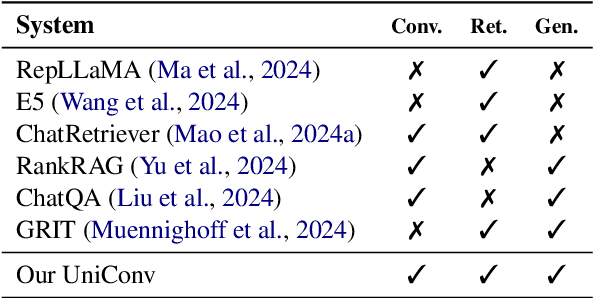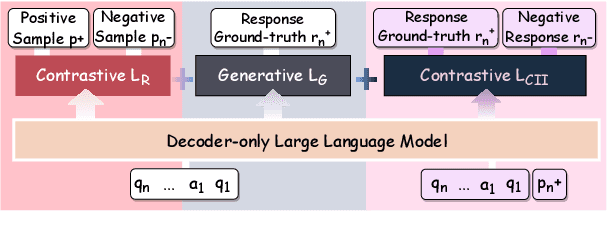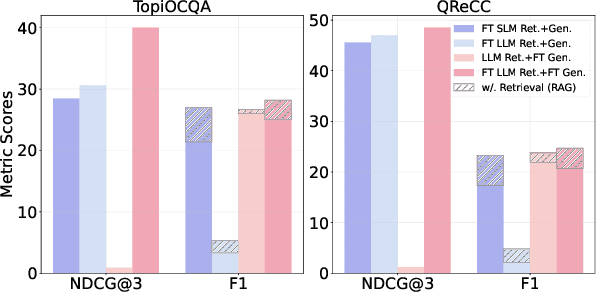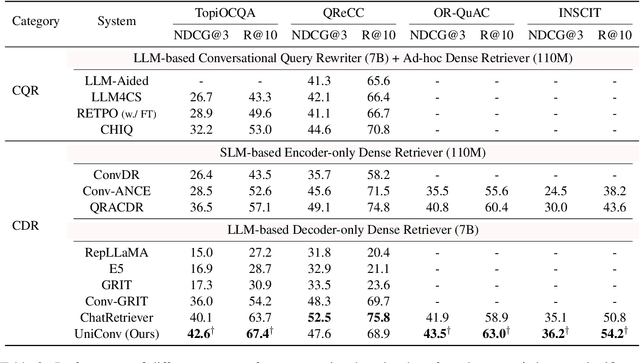Zheng Li
Department of Computer Science, Cornell Tech
MEJO: MLLM-Engaged Surgical Triplet Recognition via Inter- and Intra-Task Joint Optimization
Sep 16, 2025Abstract:Surgical triplet recognition, which involves identifying instrument, verb, target, and their combinations, is a complex surgical scene understanding challenge plagued by long-tailed data distribution. The mainstream multi-task learning paradigm benefiting from cross-task collaborative promotion has shown promising performance in identifying triples, but two key challenges remain: 1) inter-task optimization conflicts caused by entangling task-generic and task-specific representations; 2) intra-task optimization conflicts due to class-imbalanced training data. To overcome these difficulties, we propose the MLLM-Engaged Joint Optimization (MEJO) framework that empowers both inter- and intra-task optimization for surgical triplet recognition. For inter-task optimization, we introduce the Shared-Specific-Disentangled (S$^2$D) learning scheme that decomposes representations into task-shared and task-specific components. To enhance task-shared representations, we construct a Multimodal Large Language Model (MLLM) powered probabilistic prompt pool to dynamically augment visual features with expert-level semantic cues. Additionally, comprehensive task-specific cues are modeled via distinct task prompts covering the temporal-spatial dimensions, effectively mitigating inter-task ambiguities. To tackle intra-task optimization conflicts, we develop a Coordinated Gradient Learning (CGL) strategy, which dissects and rebalances the positive-negative gradients originating from head and tail classes for more coordinated learning behaviors. Extensive experiments on the CholecT45 and CholecT50 datasets demonstrate the superiority of our proposed framework, validating its effectiveness in handling optimization conflicts.
Hunyuan-MT Technical Report
Sep 05, 2025Abstract:In this report, we introduce Hunyuan-MT-7B, our first open-source multilingual translation model, which supports bidirectional translation across 33 major languages and places a special emphasis on translation between Mandarin and several ethnic minority languages as well as dialects. Furthermore, to serve and address diverse translation scenarios and enhance model performance at test time, we introduce Hunyuan-MT-Chimera-7B, a translation model inspired by the slow thinking mode. This model integrates multiple outputs generated by the Hunyuan-MT-7B model under varying parameter settings, thereby achieving performance superior to that of conventional slow-thinking models based on Chain-of-Thought (CoT). The development of our models follows a holistic training process specifically engineered for multilingual translation, which begins with general and MT-oriented pre-training to build foundational capabilities, proceeds to Supervised Fine-Tuning (SFT) for task-specific adaptation, and culminates in advanced alignment through Reinforcement Learning (RL) and weak-to-strong RL. Through comprehensive experimentation, we demonstrate that both Hunyuan-MT-7B and Hunyuan-MT-Chimera-7B significantly outperform all translation-specific models of comparable parameter size and most of the SOTA large models, particularly on the task of translation between Mandarin and minority languages as well as dialects. In the WMT2025 shared task (General Machine Translation), our models demonstrate state-of-the-art performance, ranking first in 30 out of 31 language pairs. This result highlights the robustness of our models across a diverse linguistic spectrum, encompassing high-resource languages such as Chinese, English, and Japanese, as well as low-resource languages including Czech, Marathi, Estonian, and Icelandic.
PAUL: Uncertainty-Guided Partition and Augmentation for Robust Cross-View Geo-Localization under Noisy Correspondence
Aug 27, 2025Abstract:Cross-view geo-localization is a critical task for UAV navigation, event detection, and aerial surveying, as it enables matching between drone-captured and satellite imagery. Most existing approaches embed multi-modal data into a joint feature space to maximize the similarity of paired images. However, these methods typically assume perfect alignment of image pairs during training, which rarely holds true in real-world scenarios. In practice, factors such as urban canyon effects, electromagnetic interference, and adverse weather frequently induce GPS drift, resulting in systematic alignment shifts where only partial correspondences exist between pairs. Despite its prevalence, this source of noisy correspondence has received limited attention in current research. In this paper, we formally introduce and address the Noisy Correspondence on Cross-View Geo-Localization (NC-CVGL) problem, aiming to bridge the gap between idealized benchmarks and practical applications. To this end, we propose PAUL (Partition and Augmentation by Uncertainty Learning), a novel framework that partitions and augments training data based on estimated data uncertainty through uncertainty-aware co-augmentation and evidential co-training. Specifically, PAUL selectively augments regions with high correspondence confidence and utilizes uncertainty estimation to refine feature learning, effectively suppressing noise from misaligned pairs. Distinct from traditional filtering or label correction, PAUL leverages both data uncertainty and loss discrepancy for targeted partitioning and augmentation, thus providing robust supervision for noisy samples. Comprehensive experiments validate the effectiveness of individual components in PAUL,which consistently achieves superior performance over other competitive noisy-correspondence-driven methods in various noise ratios.
Few-shot Unknown Class Discovery of Hyperspectral Images with Prototype Learning and Clustering
Aug 25, 2025Abstract:Open-set few-shot hyperspectral image (HSI) classification aims to classify image pixels by using few labeled pixels per class, where the pixels to be classified may be not all from the classes that have been seen. To address the open-set HSI classification challenge, current methods focus mainly on distinguishing the unknown class samples from the known class samples and rejecting them to increase the accuracy of identifying known class samples. They fails to further identify or discovery the unknow classes among the samples. This paper proposes a prototype learning and clustering method for discoverying unknown classes in HSIs under the few-shot environment. Using few labeled samples, it strives to develop the ability of infering the prototypes of unknown classes while distinguishing unknown classes from known classes. Once the unknown class samples are rejected by the learned known class classifier, the proposed method can further cluster the unknown class samples into different classes according to their distance to the inferred unknown class prototypes. Compared to existing state-of-the-art methods, extensive experiments on four benchmark HSI datasets demonstrate that our proposed method exhibits competitive performance in open-set few-shot HSI classification tasks. All the codes are available at \href{https://github.com/KOBEN-ff/OpenFUCD-main} {https://github.com/KOBEN-ff/OpenFUCD-main}
Quantization Meets Spikes: Lossless Conversion in the First Timestep via Polarity Multi-Spike Mapping
Aug 20, 2025Abstract:Spiking neural networks (SNNs) offer advantages in computational efficiency via event-driven computing, compared to traditional artificial neural networks (ANNs). While direct training methods tackle the challenge of non-differentiable activation mechanisms in SNNs, they often suffer from high computational and energy costs during training. As a result, ANN-to-SNN conversion approach still remains a valuable and practical alternative. These conversion-based methods aim to leverage the discrete output produced by the quantization layer to obtain SNNs with low latency. Although the theoretical minimum latency is one timestep, existing conversion methods have struggled to realize such ultra-low latency without accuracy loss. Moreover, current quantization approaches often discard negative-value information following batch normalization and are highly sensitive to the hyperparameter configuration, leading to degraded performance. In this work, we, for the first time, analyze the information loss introduced by quantization layers through the lens of information entropy. Building on our analysis, we introduce Polarity Multi-Spike Mapping (PMSM) and a hyperparameter adjustment strategy tailored for the quantization layer. Our method achieves nearly lossless ANN-to-SNN conversion at the extremity, i.e., the first timestep, while also leveraging the temporal dynamics of SNNs across multiple timesteps to maintain stable performance on complex tasks. Experimental results show that our PMSM achieves state-of-the-art accuracies of 98.5% on CIFAR-10, 89.3% on CIFAR-100 and 81.6% on ImageNet with only one timestep on ViT-S architecture, establishing a new benchmark for efficient conversion. In addition, our method reduces energy consumption by over 5x under VGG-16 on CIFAR-10 and CIFAR-100, compared to the baseline method.
SessionIntentBench: A Multi-task Inter-session Intention-shift Modeling Benchmark for E-commerce Customer Behavior Understanding
Jul 27, 2025Abstract:Session history is a common way of recording user interacting behaviors throughout a browsing activity with multiple products. For example, if an user clicks a product webpage and then leaves, it might because there are certain features that don't satisfy the user, which serve as an important indicator of on-the-spot user preferences. However, all prior works fail to capture and model customer intention effectively because insufficient information exploitation and only apparent information like descriptions and titles are used. There is also a lack of data and corresponding benchmark for explicitly modeling intention in E-commerce product purchase sessions. To address these issues, we introduce the concept of an intention tree and propose a dataset curation pipeline. Together, we construct a sibling multimodal benchmark, SessionIntentBench, that evaluates L(V)LMs' capability on understanding inter-session intention shift with four subtasks. With 1,952,177 intention entries, 1,132,145 session intention trajectories, and 13,003,664 available tasks mined using 10,905 sessions, we provide a scalable way to exploit the existing session data for customer intention understanding. We conduct human annotations to collect ground-truth label for a subset of collected data to form an evaluation gold set. Extensive experiments on the annotated data further confirm that current L(V)LMs fail to capture and utilize the intention across the complex session setting. Further analysis show injecting intention enhances LLMs' performances.
Scaling Linear Attention with Sparse State Expansion
Jul 22, 2025Abstract:The Transformer architecture, despite its widespread success, struggles with long-context scenarios due to quadratic computation and linear memory growth. While various linear attention variants mitigate these efficiency constraints by compressing context into fixed-size states, they often degrade performance in tasks such as in-context retrieval and reasoning. To address this limitation and achieve more effective context compression, we propose two key innovations. First, we introduce a row-sparse update formulation for linear attention by conceptualizing state updating as information classification. This enables sparse state updates via softmax-based top-$k$ hard classification, thereby extending receptive fields and reducing inter-class interference. Second, we present Sparse State Expansion (SSE) within the sparse framework, which expands the contextual state into multiple partitions, effectively decoupling parameter size from state capacity while maintaining the sparse classification paradigm. Our design, supported by efficient parallelized implementations, yields effective classification and discriminative state representations. We extensively validate SSE in both pure linear and hybrid (SSE-H) architectures across language modeling, in-context retrieval, and mathematical reasoning benchmarks. SSE demonstrates strong retrieval performance and scales favorably with state size. Moreover, after reinforcement learning (RL) training, our 2B SSE-H model achieves state-of-the-art mathematical reasoning performance among small reasoning models, scoring 64.7 on AIME24 and 51.3 on AIME25, significantly outperforming similarly sized open-source Transformers. These results highlight SSE as a promising and efficient architecture for long-context modeling.
UniConv: Unifying Retrieval and Response Generation for Large Language Models in Conversations
Jul 09, 2025



Abstract:The rapid advancement of conversational search systems revolutionizes how information is accessed by enabling the multi-turn interaction between the user and the system. Existing conversational search systems are usually built with two different models. This separation restricts the system from leveraging the intrinsic knowledge of the models simultaneously, which cannot ensure the effectiveness of retrieval benefiting the generation. The existing studies for developing unified models cannot fully address the aspects of understanding conversational context, managing retrieval independently, and generating responses. In this paper, we explore how to unify dense retrieval and response generation for large language models in conversation. We conduct joint fine-tuning with different objectives and design two mechanisms to reduce the inconsistency risks while mitigating data discrepancy. The evaluations on five conversational search datasets demonstrate that our unified model can mutually improve both tasks and outperform the existing baselines.
A Systematic Analysis of Hybrid Linear Attention
Jul 08, 2025Abstract:Transformers face quadratic complexity and memory issues with long sequences, prompting the adoption of linear attention mechanisms using fixed-size hidden states. However, linear models often suffer from limited recall performance, leading to hybrid architectures that combine linear and full attention layers. Despite extensive hybrid architecture research, the choice of linear attention component has not been deeply explored. We systematically evaluate various linear attention models across generations - vector recurrences to advanced gating mechanisms - both standalone and hybridized. To enable this comprehensive analysis, we trained and open-sourced 72 models: 36 at 340M parameters (20B tokens) and 36 at 1.3B parameters (100B tokens), covering six linear attention variants across five hybridization ratios. Benchmarking on standard language modeling and recall tasks reveals that superior standalone linear models do not necessarily excel in hybrids. While language modeling remains stable across linear-to-full attention ratios, recall significantly improves with increased full attention layers, particularly below a 3:1 ratio. Our study highlights selective gating, hierarchical recurrence, and controlled forgetting as critical for effective hybrid models. We recommend architectures such as HGRN-2 or GatedDeltaNet with a linear-to-full ratio between 3:1 and 6:1 to achieve Transformer-level recall efficiently. Our models are open-sourced at https://huggingface.co/collections/m-a-p/hybrid-linear-attention-research-686c488a63d609d2f20e2b1e.
Sequential Policy Gradient for Adaptive Hyperparameter Optimization
Jun 18, 2025Abstract:Reinforcement learning is essential for neural architecture search and hyperparameter optimization, but the conventional approaches impede widespread use due to prohibitive time and computational costs. Inspired by DeepSeek-V3 multi-token prediction architecture, we propose Sequential Policy Gradient modeling (SPG), a novel trajectory generation paradigm for lightweight online hyperparameter optimization. In contrast to conventional policy gradient methods, SPG extends the base model with temporary modules, enabling it to generate state-action (padded) trajectories in a single forward pass. Our experiments demonstrate that models gain performance when retrained with SPG on their original datasets and also outperform standard transfer fine-tuning. We evaluate on five datasets spanning computer vision (ImageNet, COCO), natural language processing (GLUE, SQuAD), and audio (SUPERB) to assess the industrial applicability of SPG. The proposed method demonstrates consistent improvements across widely adopted models, achieving performance gains of $+0.2\sim7\%$, with significantly low computational costs. Fully reproducible code and pre-trained models: https://huggingface.co/UniversalAlgorithmic/SPG.
 Add to Chrome
Add to Chrome Add to Firefox
Add to Firefox Add to Edge
Add to Edge